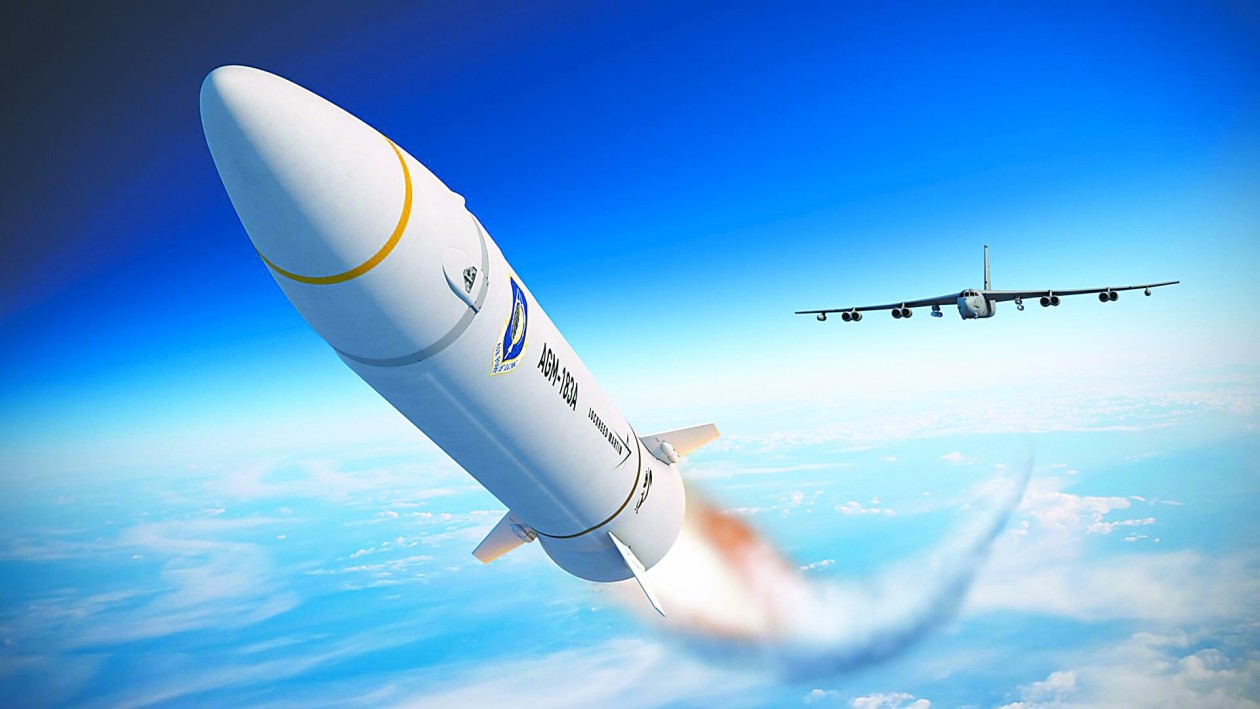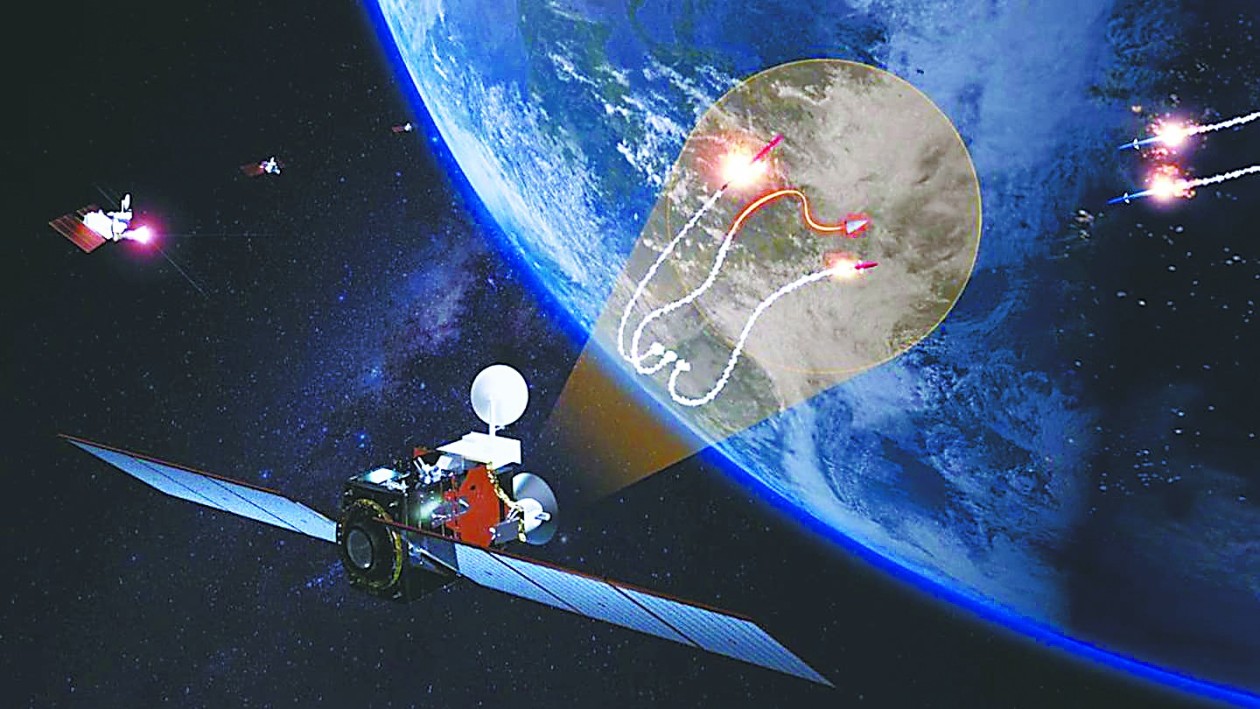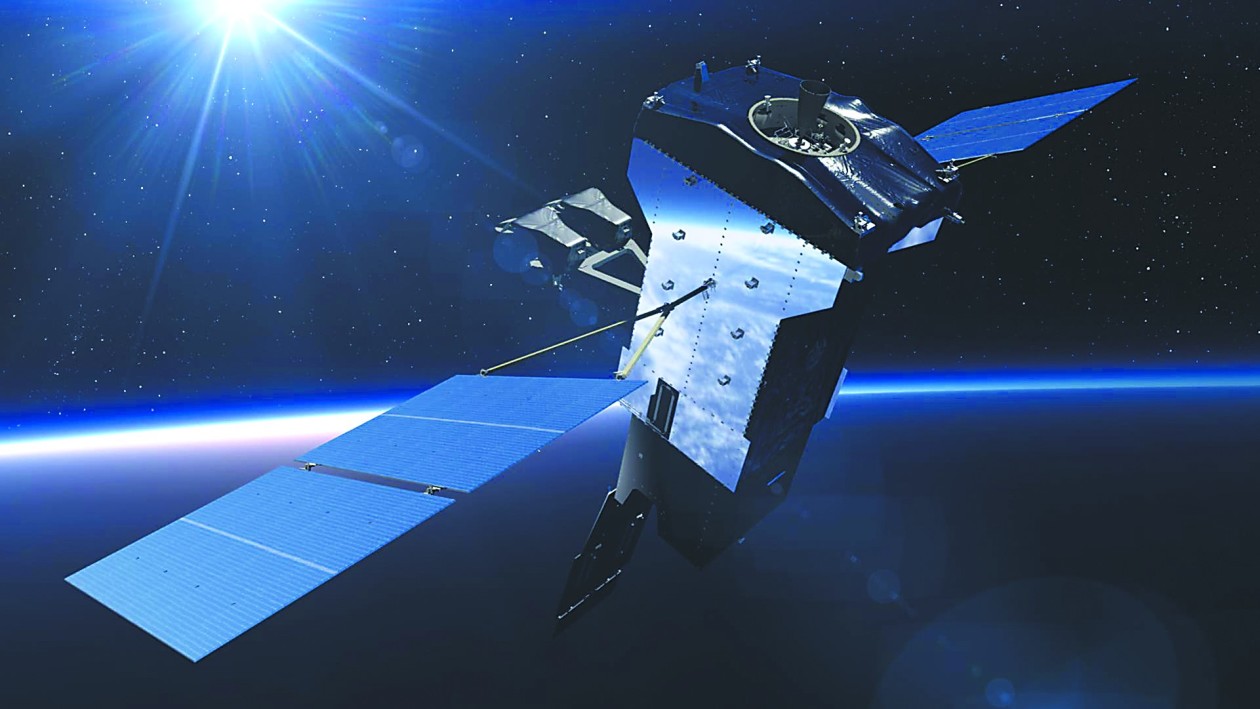[Circle depth] Anti -hypersonic missile, what is the U.S. urgent in the United States
Author:Global Times Time:2022.07.22
[Global Times special reporter Chen Yang] As Russia took the lead in putting the hypersonic weapon into actual combat, the United States seemed to feel great pressure in developing hypersonic weapons. Recently, the Pentagon has announced the successful test firing of three different types of hypersonic missile projects within a week. However, the increasingly fierce global supersonic weapon competition has promoted the development of countermeasures in turn.

US military B-52 bomber launched AGM-183A hypersonic missile
The pentagram should be fully upgraded the anti -missile system
The US "Power" website stated on the 20th that Derick Tonial, director of the Ministry of Defense Space Development (SDA), announced that the United States will spend billions of dollars and emit 28 new generation of heavenly monitoring satellites so that the United States can be more able to be more Earth expansion and strengthen the ability to respond to "China and Russia's increasing high supersonic threat".
This is just a small step for the United States to upgrade its ambitious missile defense system. Last year, the Pentagon has stopped the most critical land -based intercepting (GBI) upgrade plan in the National Missile Defense System (NMD), and instead asked Lockheed Martin and Nosro Pan Glumann to bid for the development of a new new new new new new new new new The "next -generation interception bomb" (NGI) to cope with the "rise of the rising hypersonic missile threat". According to the U.S. Missile Defense Administration, NGI must start testing in 2025, and put into service in 2030, and is urgent.
According to reports, the anti -missile system that the United States currently undertakes intercontinental missile interception is deployed by satellite systems such as the sea -based X -band radar, the land -based "paving" remote warning radar, and the Tianji infrared system. Base GBI interception and sea-based "standard-3" anti-missile system is responsible for interception. However, the Pentagon believes that in the face of hypersonic missile threats, the existing missile defense systems have been powerless.
The "power" website said that the general hypersonic missile in the general sense not only refers to its fast flight, but also has the ability to quickly maneuverate in the atmosphere, which makes the existing anti -missile system of the US military cannot accurately track and predict its trajectory. At the same time, the height of the hypersonic missile is much lower than that of traditional ballistic missiles. It is difficult for the early warning radar to be deployed on the ground to detect its whereabouts at a long distance.
Tuniar said that when the traditional ballistic missile was launched, it would release very bright flash and obvious calories. The U.S. Tianji infrared system warning satellite deployed in space will immediately capture the signs of missile launch, and then other missile warning radars will be warned. Start and track the flight trajectory of ballistic missiles. "These missiles can usually only fly according to inertia. We can accurately predict their falling points and intercept. This method has worked for decades."
But now when a missile with a hypersonic gliding warhead, the situation is completely different. "Although these warheads need to be launched with rockets, as long as they reach the supersonic speed -Mach 5 even higher -actually start to move, they use the power of the atmosphere to adjust the landing position." Niar said that the hypersonic missile brought a "major change". "If we try to predict its whereabouts according to the laws of physics and trajectory, we will conclude that the missile will change the direction during the flight."
Therefore, the United States believes that in order to deal with hypersonic missiles, the first step still needs to be discovered and monitored in advance. However, it is difficult for the traditional warning radar to be deployed on the ground to detect the whereabouts of the hypersonic missile at a long distance. From the perspective of the sky or even higher space, it has become the fundamental driving force for the US military to develop the air -based/sky -based detection system for the U.S. military.
In this context, the "Political" news website disclosed on July 5th that the "US high -altitude balloon tracking the China -Russia hypersonic missile" plan is also logical. It is reported that the United States will deploy balloons that can stay at the high altitude of 18,000 to 27,500 meters, and monitor the hypersonic missile threat by installing advanced sensors.
However, such high -altitude balloons can only be supplemented as the heavenly satellite system. Tunial revealed that the new satellite constellation proposed by the Pentagon can allow the United States to monitor the launch of the hypersonic missile from space in real time from space, and track its rails to quickly provide relevant data to the anti -missile system.
The United States will use thousands of satellites
According to the planning of the Affairs Development Agency of the US Department of Defense, the scale of satellite constellations used to monitor the Sino -Russian hypersonic missile is very large, far more than 28 satellites mentioned in the existing reports. They will be integrated into the "National Defense Space Architecture (NDSA) layered orbit satellite constellation", which is composed of thousands of satellites running on different rails. Among them, the lowest operation is the "transmission layer", which consists of a huge communication satellite constellation, which will provide "guaranteed, elastic, low -delayed military data transmission systems, which can ensure the global confidential data connection." The satellite constellation may have 300-500 satellites and run on a near-ground orbit of 750-1200 kilometers. "After the satellite constellation is fully deployed, 95%of the places on the earth can be connected at least at least two satellites at any time, and 99%of the position will be connected at least one satellite."

The United States conceives to track the hypersonic missile with satellite.
Skywae-infrared system satellite

The second -level satellite belongs to the "tracking layer" and will provide the US military with global instructions, warnings, tracking and aiming capabilities to the US military. Tunial's contract announced a contract with the United States L3 Technology Corporation and Nosro Pan Gruman, which belongs to the "tracking layer" satellite. The two major military giants each obtained a contract for producing 14 new types of warning satellites. Coupled with the cost of launch and ground control and support, the total expenditure of the contract is about 2.5 billion US dollars.
When talking about why it is necessary to develop such a huge satellite constellation, David Thompson, deputy commander of the United States Space Army, said that "China and Russia are frequently launched an attack on the US satellite, including electronic interference, laser blindness, and cyber attacks." He emphasized that the traditional high -value satellite integrates a lot of functions. Once attacked, it will cause damage to the entire system. Under the inspiration of the "Star Chain" satellite constellation, the U.S. military satellite will also develop in the direction of distributed super satellite constellations in the future. Essence
Tuniar said, "We will launch and deploy satellites that can be fully warned and tracked as much as possible missile launch as possible worldwide. In the future, we can not only perform traditional early warning tasks, monitor missile launch and predict flying flights The path, and it can deal with the hypersonic missile. "According to the Pentagon's idea, once the opponent's hypersonic missile was launched, the infrared warning satellite running on the high -orbit will be warned first. After the hypersonic glide aircraft is separated from the Rockets, it will rise quickly when flying at the atmosphere at a high speed. "Once this happens, our tracking satellite can be seen immediately." Since then, the tracking satellite will start calculating the glide aircraft to move forward. The trajectory of the direction is constantly updated. These data will be passed to the "transmission layer" satellite at the same time, and the latter will pass the information to the ground station in the "hundreds of milliseconds" to guide the ground interception system operation.
Artificial intelligence, another idea?
However, the "Power" website acknowledges that this heavenly foundation system designed by the Pentagon has a long way to go. "It will take many years to launch hundreds of satellites. What we see now is only the first step towards this ambitious goal."
This plan to upgrade based on traditional anti -missile models requires a lot of resources and time. The U.S. Defense Advanced Research Program (DARPA) proposes a new idea of responding to the threat of hypersonic missiles. The US "Science and Technology Times" website said that DARPA will focus on the booming stage of the hypersonic missile, because at this stage, the flight trajectory of the hypersonic missile is similar to conventional ballistic missiles, and it is more likely to be discovered and intercepted. And at this stage, the hypersonic missile will fall down and will fall to the area near the launch site, which will not threaten the United States. However, the report acknowledged that this means that the United States must break through many defense and attack the hypersonic missile located in the deep zone of the opponent, and the difficulty and risk are very high.
Hong Kong's "South China Morning Post" declared that compared with the use of thousands of satellites in the United States to use thousands of satellites in space to closely monitor the hypersonic missile flight trajectory, Chinese military researchers' ideas are more clever. The track speed missile is close to the target.
According to the report, Chinese experts imagine in professional academic papers that the interception system of artificial intelligence command "can predict the potential flight trajectory of the coming weapon." "At present, the world's military power has launched a fierce military reserve competition around the development of hypersonic gliding aircraft, which has brought new severe challenges to Air Tianan. The trajectory forecast is of great significance for the evaluation of combat intentions and air defense interception." Although the defensive side usually does not know the quality, size, shape, and aerodynamic performance of the coming missiles, artificial intelligence can make quite accurate judgments by analyzing the flight data observed. "No matter how advanced or fast, but these missiles still need to follow the law of physics. It avoids every small action of the air defense system in the air to release signals related to missile design, capabilities and tasks."
Therefore, the artificial intelligence system can conduct machine learning on the relevant information collected by the anti -spoiler missile in the early stages of the antihypertensive system, and use the information to predict the most likely trajectory of the latter stage of the missile in the later stage of the missile. "However, Chinese experts said that it is difficult to transform this idea into actual work model. The original data collected by early early warning system contains a large amount of interference information that may confuse artificial intelligence, and too much data will also make the computer overload." To this end, it needs to be developed. New machine learning methods and try to compress the prediction time as much as possible, because if you want to intercept hypersonic missiles, the response speed of the anti -missile system is very high. (This version of the pictures from the website of Lockheed Martin, the United States)
- END -
Sandu: Cadres and talents "group -style" help precise solid problems to help the development

We will seriously practice the envoys, give full play to our own advantages to hel...
Extremely review | Meloel Pure Milk was investigated by the case. Don't let consumers "collapse" again

Ji Mu News commentator Qu JingIn response to the detection of propylene glycol in ...